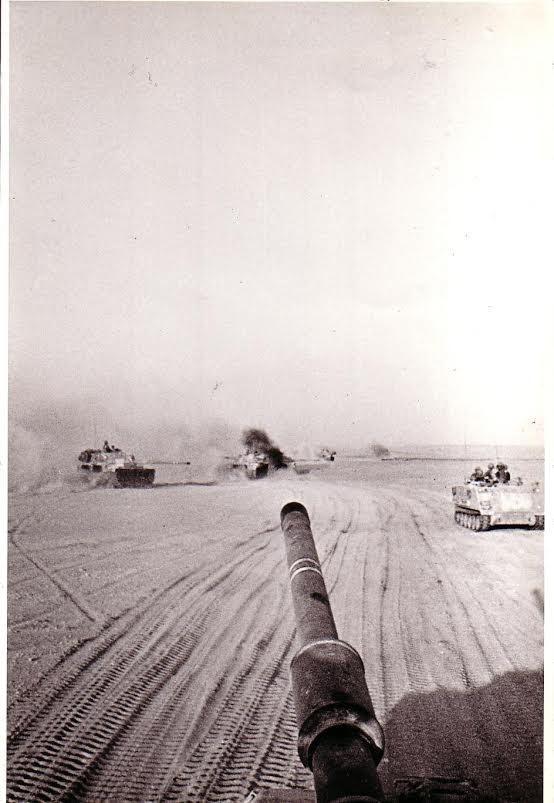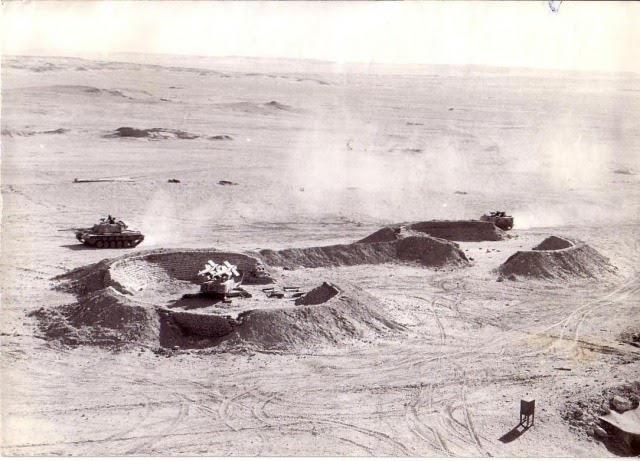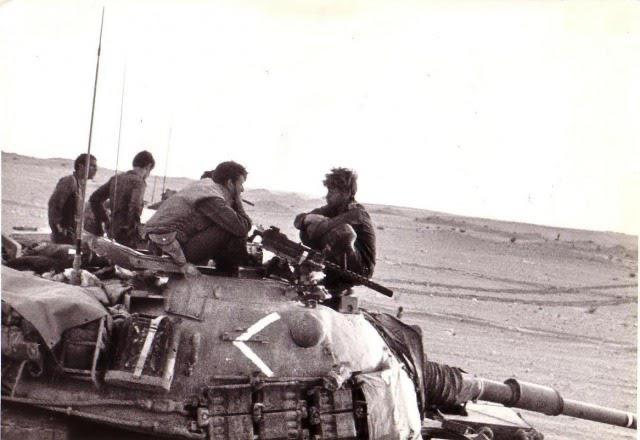Yom Kippur War: Through The Eyes of a Soldier
On Yom Kippur, 47 years ago, Israel was attacked by a coalition of Arab states, and was catapulted into war. For three weeks, Israeli soldiers fought tirelessly to defend their country from invading forces. Lt. Col. (Res.) Avi Gur was a young officer at the time, fighting in the 401st Armored Brigade on the southern front. The following photos were taken by Lt. Col. (Res.) Avi Gur during the Yom Kippur War. He explains what took place, in his own words:
“When the war began, I was on the front line. I was the deputy commander of a company in the Suez Canal and our goal was to hold back the Egyptian forces and keep them from carrying out acts of war against Israel. A few hours later, my commander was killed and I became the company commander.”

"This is a picture of my battalion commander, Lt. Col. Emanuel Sakal, from the first week of the war. The image reflects the IDF’s doctrine, according to which the commander is in the field side-by-side with the forces. This motivates the troops. Once I hit an enemy’s tank and he saw it in real time and complimented me on the radio."
"During the war, he asked me to mislead the Egyptian forces by getting them to think that we were going to attack from the south even though we were going to attack from the north. This was very hard for me because being successful meant getting them to fire at me. So what I did was drive in a zigzag motion in the sand, forming a huge cloud of dust. How did we survive? I don’t know. Some call it divine protection and others call it luck. After they started firing at us he said ‘we have achieved our goal’, and we quietly and carefully drove back."
The Yom Kippur War began on October 6, 1973. Thinking that the IDF would not be prepared to defend Israel on the holiest day of the Jewish year, a coalition of enemy forces led by Egypt and Syria coordinated surprise attacks, invading the Golan Heights in northern Israel, and the Suez Canal in the south. The Israel Defense Forces was significantly outnumbered. It had far less equipment than the attacking countries, and little time to quickly develop a battle strategy.

"This picture shows the strength of one tank that could hit a target from more than a kilometer away. In the picture, you can see my tank cannon, and the black smoke in the background is the target we hit."
"When we ran to the tanks, I had a camera hanging around my neck. It was an unusual sight, because not many people had cameras at all back then. We started moving and there were Egyptian planes attacking us from above. Tanks were firing at us from the ground and Egyptian commando forces crossed the canal and fired anti-tank missiles. It was like the wild west – whoever shoots first, stays alive."
"You have to imagine thirty tanks securing an area of 143 km. We stood alone facing thousands of soldiers and weapons. For every thirty enemy soldiers, there was one Israeli soldier. The ratio is simply unproportional. But we, the Israeli soldiers, even though we stood before thousands, we did not run away. We fought professionally and wisely. People had no choice but to be heroes."

"This is the drama. Even at night you had to be on alert. The Egyptian artillery was 30 times stronger than ."ours![]()
"When we ran to the tanks, I had a camera hanging around my neck. It was an unusual sight, because not many people had cameras at all back then. We started moving and there were Egyptian planes attacking us from above. Tanks were firing at us from the ground and Egyptian commando forces crossed the canal and fired anti-tank missiles. It was like the wild west – whoever shoots first, stays alive."![]()

"The company commander of the unit to the south of us reporting to our battalion commander".
On the second day of the war, tens of thousands of Egyptian troops crossed the canal with hundreds of tanks, and the armored units suffered great losses. Thinking back, Avi remembers with pain the fallen soldiers:
"You see your friends being killed...You see people, your friends, wounded… but we kept fighting."

"The tank cannon. The black smoke in the background are targets we fired at."

"The Browning 0.3 machine gun can fire continuously for over 10 seconds, and therefore we used it to shoot at Egyptian commando forces…"
After days of battle, the IDF began a series of counter attacks on Egyptian Forces. The offensive was code-named Operation Stouthearted Men or, alternatively, Operation Valiant.
"At one point, we received an order to cross the canal. That was the first time I reached for my dog tags because I wasn’t sure I would stay alive. Why? Because my tank had to drive over an unstable bridge. Also, when you’re on the bridge, you’re stuck there. You can’t go left and right, and you become an easy target."

"An Egyptian missile base that we conquered after it was abandoned by Egyptian soldiers".
"There were times when I was agitated, but I was able to project calmness to my soldiers. I used to sing to them in our internal communications network. When we all met recently, they told me that hearing my voice reassured them."

"I remember this picture. It was taken with my camera, but my gunner took it. It’s a picture of me talking to the commander of the platoon operating to the north of us. We were in Egypt and we were just a few tanks responsible for a big area".
Toward the end of the war, Israeli forces encircled the Egyptian Third Army:
"The 401st Armored Brigade took part in one of the greatest military achievements of the war: encircling the Egyptian Third Army. It wasn’t easy to do, but it was incredible…The key word in my opinion is victory, and we were victorious because of the execution of our missions and thanks to the heroism of the soldiers."

